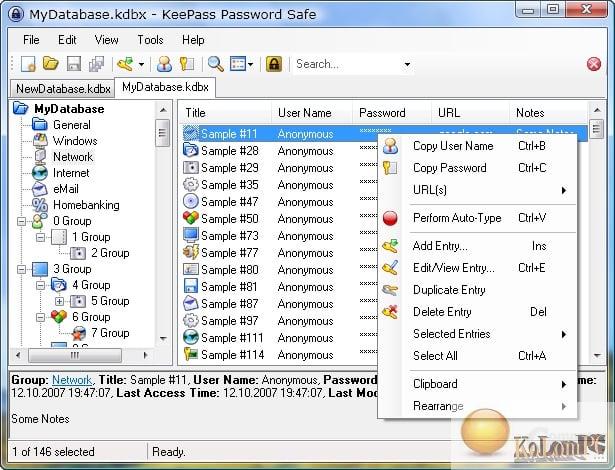

#Kypass mac download password#
On the other hand, you won’t be able to view an app-specific password again once it’s generated. But you can actually re-use an app-specific password across multiple third-party apps (as long as it isn’t revoked).

Underneath the App-Specific Passwords section, you’ll now see a small button dubbed “View History.”.Find the Security section and hit the Edit button next to it.Log back into your Apple ID account page.Want to revoke an individual app-specific password? Just hit the X icon next to it. Once they’re revoked, you’ll need to generate a new app-specific password to continue using that service. Speaking of which, if you do end up changing the password on your Apple ID, all of the app-specific passwords that you use will be revoked as a security measure. You can revoke its app-specific password without needing to change your primary password or reset your account. This also comes in handy if you’re having doubts about the security or privacy of a third-party service. But if you find yourself not needing one of those passwords, you can always revoke it.
#Kypass mac download how to#
How to manage and revoke app-specific passwords You can view how many active app-specific passwords you have by hitting View History.Īt any one time, you can only have 25 active app-specific passwords connected to your Apple ID. For other apps, just enter the email address associated with your Apple ID and the app-specific password in the password field. Some apps have a specific section for connecting your app-specific password. They should offer instructions on how to do so. The exact process for logging in with an app-specific password will vary by app. With the app-specific password in hand, you can now connect a third-party app to your Apple ID.

Enter a password label so you can keep track of your app-specific passwords.In the Security section, you’ll see a button underneath App-Specific Passwords that says Generate Password….Here, you’ll find several subheadings - including one that says “Security.”.(You may need to authenticate via two-factor if you aren’t on a trusted device.) But you can also do it through the official Apple ID management portal. If it isn’t, it’s something we recommend doing anyway.Ĭreating an app-specific password is actually pretty easy. Note: To use app-specific passwords, you’ll need to make sure that two-factor authentication is enabled on your Apple account. How to use app-specific passwords The app-specific password pane is a bit hidden, but you’ll find it on the Apple ID site. It also ensures that your password or login credentials are never shared with another service or stored on their servers. You’ll use an app-specific password for any mobile, desktop or browser app that requires access to some parts of your Apple ID data, such as the events you create in Calendar or the addresses in Contacts.Īn app-specific password lets a third-party service access, say, your calendar dates - but nothing else. In general, apps you connect to your Apple ID can only access three types of data from your Apple account: email, contacts or events. What sets app-specific passwords apart from simple cross-app integration is that they’re much more secure. They’re basically the only way to use a third-party service with certain iCloud services, such as mail, contacts or calendar. What are Apple app-specific passwords? App-specific passwords are a security feature that lets you use third-party apps with your Apple data (without giving them too much access).Īpp-specific passwords are, essentially, a randomly generated way for a third-party app or service to access certain parts of your Apple ID.

How to manage and revoke app-specific passwords.


 0 kommentar(er)
0 kommentar(er)
